Note: This post was written for the purpose of entertainment and idle speculation only. SparkFun products are not intended to diagnose, treat, cure or prevent any disease or affliction.
My wife and I recently welcomed an adorable new baby into our lives. He started out, as many infants do, with a case of jaundice. Among the remedies the doctors recommended was a fiber optic LED blanket, one that enabled us to facilitate phototherapy on our kiddo, reducing the level of bilirubin in his blood by blasting his skin with blue light. It was simple and easy - we just wrapped him up like a little human burrito in a tortilla of light. It sure seemed to do the trick.
He was, however, unimpressed.
I'll admit, I previously had no idea such a treatment existed, nor even that light of a specific wavelength range could have such remarkable curative powers. I see my child as a member of a bold new generation, one that will deliver mindblowing discoveries and innovations while facing down unprecedented challenges in the century to come. The thought that he entered this world looking like some bionic gloworm was fascinating to me as an artist, a nerd, a parent and, well, just generally someone who likes to fixate on weird things. What can I say, a new rabbit hole had opened up and I gleefully tumbled down, scouring the web to learn about various forms of phototherapy - proven, experimental and otherwise.
This led me to red LED phototherapy. I’ve dealt with severe rosacea most of my life, and while it’s more controlled now than it has been in two decades, it’s still far from perfect. I’ve tried a ton of remedies through the years, but never before had I been nudged in the direction of phototherapy. While blue light therapy has been demonstrated to be very effective in the treatment of jaundice, the effectiveness of red light in treating a variety of ailments seems to be a far more complex - but certainly compelling - subject.
Naturally, a great deal depends on what you’re attempting to treat and what technology and methods you’re employing. NASA in particular has conducted pioneering studies into the use of LEDs for biostimulation. I’m no astronaut, but figured I’d give it a shot all the same. Some dermatologists have tanning-booth style boxes you close yourself into, or for upwards of $500 you can buy a special mask, but those options seemed like far too much hassle and expense. I work at SparkFun - surely, I thought, I can DIY this business.
I started by combing our website to compare the various red LED products we offer and see what might the best match for my face. EL is bright and flexible, sure, but it seemed uncomfortable and a bit too high-power for my personal tastes. I didn’t want to zap my nose from a short. I was also concerned about too much heat. LEDs strips were intriguing, but these LED ribbons seemed just what the doctor (that doctor being me, who is not actually a doctor) ordered:
Covered in cloth, they’re soft and cozy, and all you need to power them is a few coin cell batteries. Target wavelengths in many commercially available red LED therapy devices tend to be in the 630 to 680 nm range. Inolux says the red LEDs on their ribbons have a dominant wavelength (Wd) of 624nm and a peak wavelength (Wp) of 632nm. Good enough?
My initial solution is, let’s say, inelegant. Now, I know what you're thinking - it looks like all I did was wrap my face in LED ribbons like a mummy. In fact, there’s a lot more to it than that. You see, first I hastily soldered coin cell battery holders to said LED ribbons. Then I wrapped my face in them.
Okay, sure, it’s not technologically sophisticated, but that’s a nice thing about these LED ribbons - they’re super easy to use. They're also extremely flexible; I double knotted them in the back of my head and they stayed on great. I recommend looking at our Product Showcase video for more tips and tricks. You may also find our Working with Wire tutorial helpful when it comes to soldering the little stranded core wires on these things. There’s a lot of great advice there that I probably should have heeded (and some that I did).
Did I alleviate my rosacea? Probably not. Did I freak out my coworkers? Maybe a little. This was no easy task - SparkFun employees tend to have a pretty high threshold for weird.
Interested in learning more about LEDs?
See our LED page for everything you need to know to start using these components in your project.

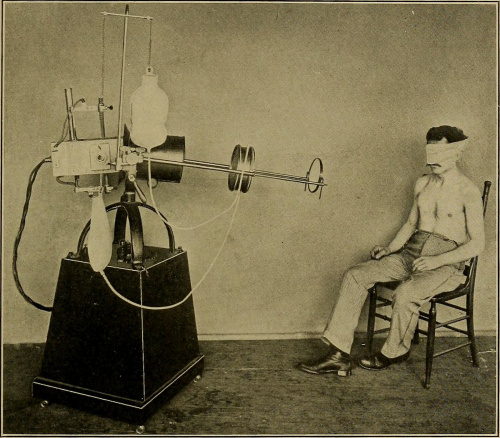
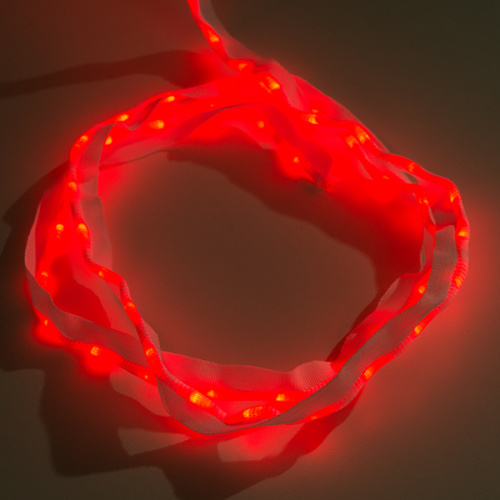
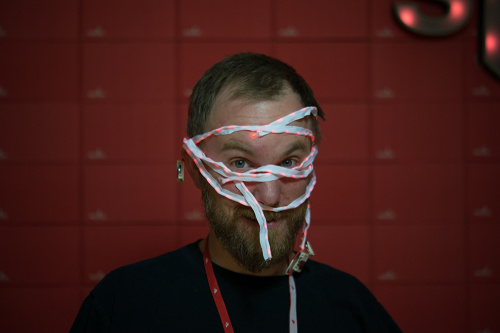
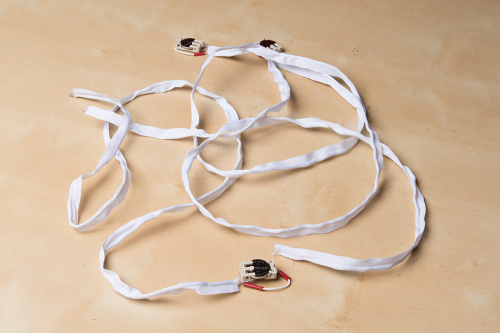
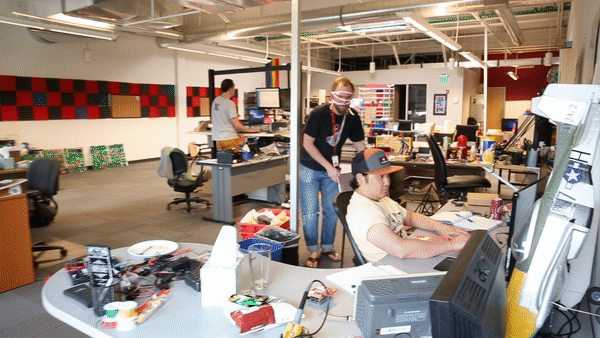







I LOVE the expression of your son! The caption could so easily be "This is SO BORING!!! When am I going to get to do something interesting, like learning to program?"
When he gets there, I hope he'll find some time to teach his dad!
Even though it's been nigh on to 50 years since I started, it seems to me that an Arduino might be a good place to start. You might start by watching some of the Ardu8ino videos posted by this company in Niwot, CO called "SparkFun". ;-)
Another place to start would be with the micro:bit -- it has a more "graphical" interface and so requires less typing, though for us "old f*rts", it's easier to type what we want rather than "find it in a menu then drag and drop it". (Yes, you can also type Python programs for the micro:bit.)
Adafruit also has excellent tutorials, and there are lots more out there on the "interWebs", though quality ranges from "excellent" to "dubious".
There is some research suggesting that pulesd light (40 Hz) may have a good effect on Alzheimer's disease in mice. (The caveat is that historically much less than 10% of Alzheimer's treatments effective in mice have been found to be effective in humans.)
There was a paper was published in Nature, 16-December-2016, Vol. 540, pp 230-235. (The on-line version has about 15 pages of "supporting info".)
I was a bit surprised when the librarian of my local library had never heard of Nature. Fortunately, she was able to give me the appropriate info to log into the library's website, and from that I was able to find a "publication search engine" that was able to find it.
Amazing--thanks for sharing! It looks like MIT neuroscientists this year (drawing off that 2016 study) found that if they combine the visual with auditory stimulation, it's even more effective than either one by itself. Fingers crossed that they're onto something that will work on humans.